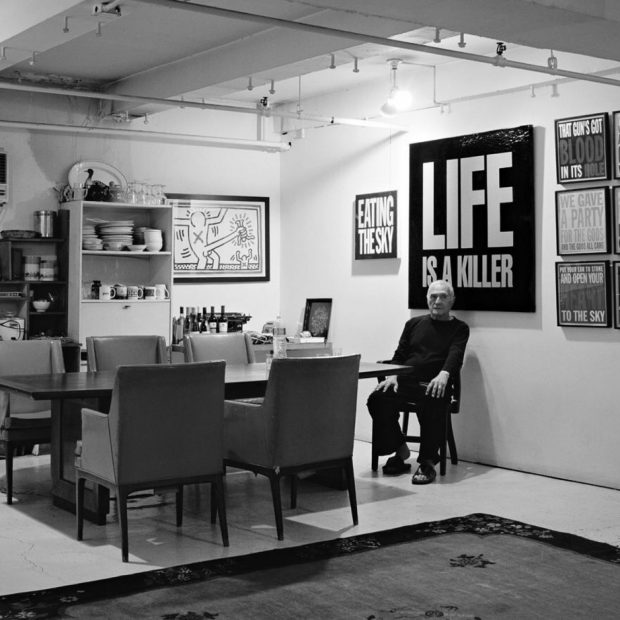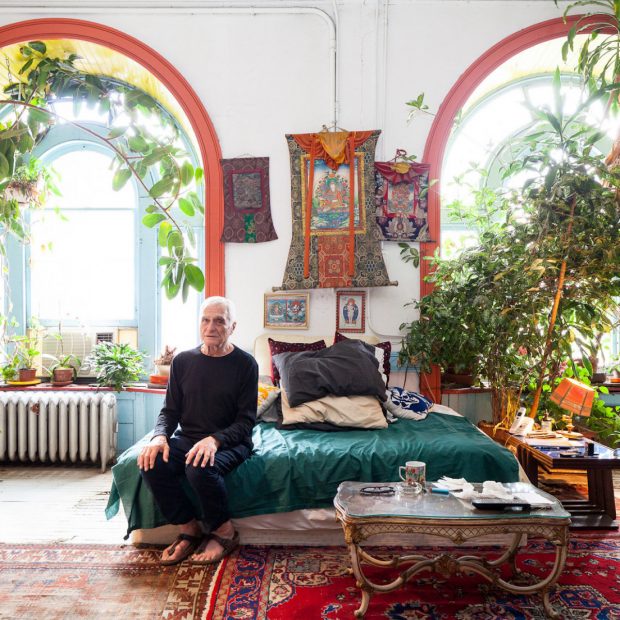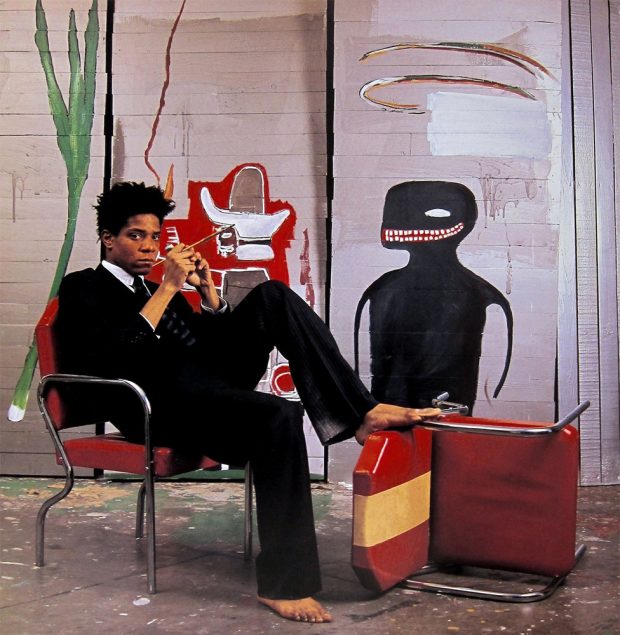
The 222 Bowery building was completed in 1884. At the time, the area was teeming with cheap pubs, shelters, homeless people, and prostitutes. The first tenant was the Young Men’s Institute, a forerunner of the YMCA (Young Men’s Christian Association).
Here, young men were able to attend training courses in a “Christian atmosphere”, play sports, and pursue other activities that the religious association describes as “promoting character and being in harmony with the faith”. The YMI was supposed to counteract the negative influences of the neighborhood on young men.
The YMI closed in 1932, and in the years that followed, the building began to attract artists looking for large, inexpensive studio space with lots of sunlight. The French painter Fernand Léger was one of the first to move in here in 1940, precisely because of the low rents – it seems ironic when you consider that the record price for one of his works is now 40 million dollars.
In 1958, the then world-famous painter Mark Rothko also opened a studio there, because there was enough space in the former gym for his current commissioned work – a series of wall-filling paintings for the renowned Four Seasons restaurant. The pioneering Rothko and the conservative Four Seasons were an odd pairing, and why he accepted the assignment is difficult to understand.

John Giorno’s Half-Century on the Bowery
The project became increasingly hateful to him, and in the end, he resolved that the paintings should “ruin the appetite of any business person who walked into the room.” When he saw the works hanging in the restaurant, it became too much for the painter. He returned his fee of $ 35,000 and had the paintings transported. Today the pictures from this series hang in the Tate Gallery of Modern Art in London, the National Gallery in Washington, and the Kawamura Museum in Japan. Rothko left the Bowery studio in 1962.
READ: Long Live Rock ‘n’ Roll: On the Trail of New York Rock History
Around 1965 the most flashy and best-known phase of 222 Bowery began. The house became a place where many people who portrayed or wanted to portray something in the New York art world spent time. Warhol was hosting parties there. The famous poet Allen Ginsberg was a regular visitor to the commune. The readings by William S. Burroughs, mostly multimedia events with lights, sounds, or films in the background, caused a stir – very innovative for this time. The New York Times described Burroughs’ readings in a 1965 article as “irresistibly compelling and strangely touching.” The light effects were created by the “Dream Machine” by the artist Brion Gysin.
The “dream machine” was basically a rotating light that was said to cause visual hallucinations by exposing the eye to a frequency of 8 to 13 flashes per second. Not only the makers but also the audience at Burroughs’ readings were often artists who were already among the most important of their generation or who were to make a breakthrough in the years to come. Among others, the photographers Diane Arbus and Richard Avedon, the authors Frank O’Hara, Gregory Corso, and Susan Sontag, the painters Larry Rivers and Barnett Newman, and the sculptor Marisol. Some artists stayed the same and temporarily lived in 222 Bowery, for example, the pop art icon Roy Lichtenstein. The sound artist John Giorno, who later became the property of 222 Bowery, played a key role in the “management” of the building.
In 1974 Burroughs, a heroin addict for most of his life moved into the 222 Bowery. His home was a semi-underground part of the building that still housed the YMI’s changing and shower rooms. Soon people only spoke of the “bunker” when it came to Burroughs ’domicile.
READ: A Brief History of Immigration to New York: From 1524 to Today
Burroughs ’work was often radical, new, and challenging, but his personality was not at all. The man who wrote about drugs and homosexuality since the early 50s, when it was still considered highly subversive, was a shy, quiet, very private person who dressed extremely conservatively. The author Graham Caveney chose the title “Gentleman Junkie” for his biography of Burroughs for a reason.
The musician and poet Patti Smith, herself an icon in the New York art scene, was living in the Chelsea Hotel at the time with the gay photographer Robert Mapplethorpe, who would also achieve world fame and who died of AIDS in 1989. In her 2010 memoir “Just Kids”, she remembers the long walks to the Burroughs bunker. “You could tell the building from afar by the burning garbage cans that homeless people had lined up to cook and warm up.” Smith, who was often performing at the nearby CBGB rock club at the time, knew Burroughs well. She’d called a taxi for him outside the Chelsea Hotel many times when he’d had too much to drink. Smith also reserved a regulars table for Burroughs at the CBGB, where he could see bands that were still unknown at the time, such as Blondie, the Ramones, or the Talking Heads.

Jean Michel Basquiat also frequented 222 Bowery
In the 1980s, graffiti artist Keith Haring and painter Jean-Michel Basquiat, who both rose to fame young and died young, joined this loose group.
Burroughs himself moved back to Kansas during this time. John Giorno kept the “bunker” ready for the old writer’s occasional visits just as he had left it. Burroughs’ works “Naked Lunch” and “Junkie”, published as dime novels in the 1950s, have now been rediscovered, literary critics named the old man one of the most important American authors of the second half of the 20th century, and Burroughs became an icon late in life the pop culture that appeared on record covers and in commercials for Nike. Rock stars like Kurt Cobain paid tribute to him.
In the 1990s, 222 Bowery were divided into condominium lofts. The exterior, however, was left in the original and is now a listed building. Burroughs ’bunker – only under these conditions did Giorno agree to the conversion into residential lofts – had to be preserved. And now it still stands 17 years after his death, the almost windowless cave with walls full of targets and stacks of books and yellowed magazines. Burroughs ’old typewriter stands between worn shoes, a hand-embroidered quilt, many wooden walking sticks, pinwheels, and skull candles.
Like us on Facebook for more stories like this: